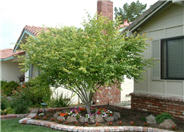
Common name:Japanese Maple
Botanical name:Acer palmatum
This magnificient plant can used as a small tree or shrub. It is deciduous with graceful leaves which have a scarlet color in spring as it leafs out. Leaves later turn orange or yellow in fall. It is slow growing to 20', and requires shelter from the hot sun. The leaves of this tree are small, light green in color, and deeply lobed. It should also be noted that this tree remains spectacular throughout all seasons.
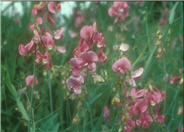
Common name:Sweet Pea
Botanical name:Lathyrus odoratus
This is an old-fashioned, all time favorite annual. Sweet Pea is a sweet scented, flowering vine for spring and early summer gardens.
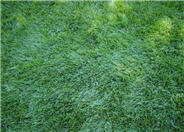
Common name:Tall Fescue, Marathon (turf)
Botanical name:Festuca arundinacea 'Marathon'
This grass is best when kept at about 2"-2.5" high, but it has a root depth of about 6'. It is a beautiful, dark green color all year and is used in a variety of locations.
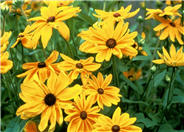
Common name:Gloriosa Daisy
Botanical name:Rudbeckia hirta
Bright yellow, large, daisy-like flowers that grow all summer and fall highlight this daisy variety.
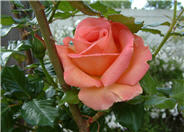
Common name:Hybrid Tea Rose (selections)
Botanical name:Rosa Hybrid Tea varieties
These shrubs and vines are the most loved in the Western USA and are very resilient. They come in a wide variety of sizes and colors and are easy to maintain with proper care. They can be used in a water-conserving garden with careful attention to irrigation practices.

Common name:Foxglove
Botanical name:Digitalis purpurea
This biennial foxglove will reach up to 4' when blooming in the early summer. The large spire of huge, bell-shaped flowers ranges from purple to pink to cream with purple specks. Large, textured leaves form an attractive rosette until bloom time. The plant likes a moist, filtered-sun area similar to the Lobelias and Columbines. Plant it only in shady locations for water conservation consideration.

Common name:Dwarf Plumbago
Botanical name:Ceratostigma plumbaginoides
Intense blue flowers adorn the glossy green leaves of this plant in late summer and fall. This 6" mat-forming ground cover does well in shade or sun, and in average soil.
| Designer: Denise Pulley | Brick Road Back Yard Two |
Photographer: GardenSoft |
Soils and Compost:
Incorporate compost 6" into your soil to retain water, reduce compaction, feed earthworms, and provide valuable nutrients to your plants.
Water Saving Tip:
Modify your controller each season. In the rainy season turn it off.
Integrated Pest Management:
Attract, or buy beneficial insects such as ladybugs and lacewings to control pest outbreaks in your garden.
